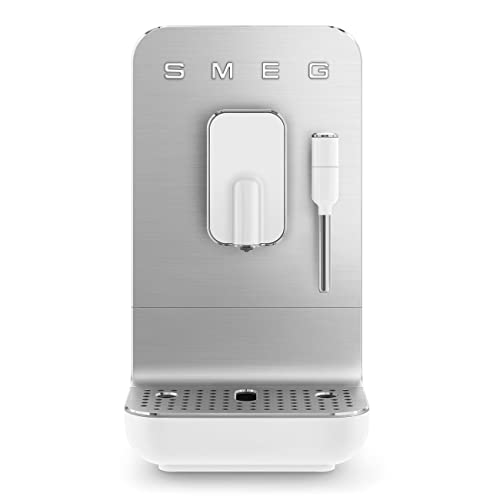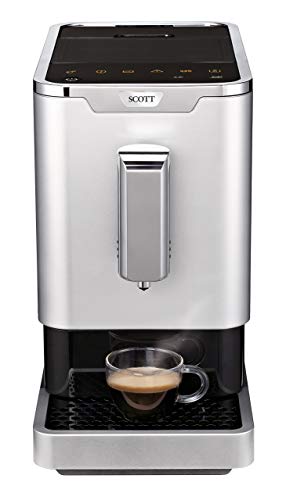자유게시판
| 제목 | 7 Tricks To Help Make The Most Out Of Your Machine Coffee |
|---|---|
| 작성자 | Jasper Super |
| 조회수 | 11회 |
| 작성일 | 25-01-25 08:38 |
| 링크 |
본문
 What Goes On Inside a Machine coffee machine Best Maker?
What Goes On Inside a Machine coffee machine Best Maker? Coffee machines make it easy to take a hot cup of coffee at home. The most popular models come with an adjustable timer, and an integrated grinder.
Coffee machines make it easy to take a hot cup of coffee at home. The most popular models come with an adjustable timer, and an integrated grinder.Sensors regulate the heating element that circles around a warming plate when you switch on the power. It also has an aluminum water tube that runs through it.
Cold-Water Tube
A machine coffeemaker is a device that takes the water you pour into it and transforms it into coffee. This is done by boiling water and forcing it through a system which produces high pressure. These machines can operate up to 15 bar of pressure in contrast to coffee percolators, which only operate at one bar.
There is a reservoir at the bottom of the machine that appears like a bucket and holds the water that is used to make your beverage. The reservoir has a hole in the bottom. It connects to the tube that is inside the heating element on one end and to an insulated tube that runs from the bottom of your machine up to the tap on the other.
When you switch on your machine, the water in the reservoir is pushed up into the heating chamber, and the thermostat instructs it to get heated. As the water warms, it expands. This causes a screen to move under a portafilter that is filled with espresso and tamped. The pressure causes the screen to cut through the filter, allowing the espresso into your cup.
The espresso that comes out of your machine is a rich, delicious beverage that can come with different levels of acidity depending on the type of coffee you choose. If you find your espresso to be unpleasant, you can try using a different filter or more coarsely ground beans. If the problem persists you should contact a licensed technician to carry out a deliming process. This issue is typically caused by lime scale.
Hot-Water Tube
The white tube that is insulated at the bottom of your coffee maker is referred to as the hot-water tub. It carries hot water from the heating chamber to the faucet at the top of your coffee maker. This water saturates the grounds, carrying their flavors down into your waiting pot of coffee.
Certain coffee makers come with a feature that keeps the water warm, so that it's ready for you as soon as you wake up. This is done by using a heater that produces some steam. The steam is then directed towards the spout to keep your coffee warm until you're ready to pour it.
While it may seem like the coffee maker is complex and expensive, most models are relatively simple to operate and have few moving parts. A thorough maintenance and cleaning routine will keep your machine in excellent condition for a long time to come.
Many coffee machines that have integrated grinders allow the addition of ground coffee from a container, secure the portafilter in place, and then flip the switch to start the process of brewing. The pump will pressurize heated water until it reaches 220 PSI pressure when the switch is turned.
One of the most frustrating things when making the perfect cup of coffee machine pro is having refill the reservoir frequently. Some coffee makers have machines that can connect directly to the household water line. This allows you to bypass the reservoir. There are kits for those looking to make it their own. They can convert any machine to an espresso maker that connects directly to a home water line. The process is a bit more involved and involves drilling holes in your machine to accommodate the adapter. This could weaken the structure of your coffee maker, causing cracking in the areas where holes were drilled. It is recommended that you purchase a specially-built coffee maker that is designed to take direct water lines to get the best results.
Resistive Heat Element
The heater is a piece of metal that has a special type of resistance to electricity. It impedes the flow of electricity without stopping it completely, and some energy is converted into heat. This is what causes the heating of the water inside the boiler of your coffee maker.
The heating element is situated on the left side of the machine's base. It is shaped like the filament of a lightbulb, or the component of an electric toaster. It is composed of an aluminum extrusion split into two sections with a tube that is used to allow water to flow and the resistive element. (Watch the video here). The coiled wire gets heated because of the resistance it has.
When you switch on your coffee maker, the device heats the aluminum water tube to the point where it reaches a point of boiling. Then the bubbles float up through the white tube and are sprayed on your coffee grounds with the shower head. This water spray picks up essential oils from the coffee beans as it descends and also contains caffeine.
If you're having trouble with your coffee maker and hot water isn't coming out it is most likely due to a faulty pressure switch or heating element thermostat. Both of these can be checked with a multi meter by conducting a continuity test. Connect one of the poles to the electrical connector and the second to the body of the flange. It should read at least 1. If the reading is not there, then you will have to replace the thermostat or switch.
The other main part of your coffee maker that could be the cause of problems is the water pump or your reservoir. It can become clogged with lime, and you'll need to run water and a descaling agent through it.
Warming Plate
A warming plate is a heated surface that keeps coffee warm in a cup once it has been brewed. This coffee maker feature is extremely popular among those who enjoy coffee at restaurants and is an excellent addition to any home kitchen. The heating plate can be rusty and ruin the flavor therefore it is crucial to keep it clean. The best home coffee machine way to clean the heating plate of a coffee maker is to use a mix of oxalic acid and water.
Oxalic acid how much is a good coffee machine a powerful cleaning agent that can be used to remove corrosion from sinks, pipes, gas stove burners, and a variety of other household items. You can purchase this product at most hardware stores. It is a great method to clean the rusty warming plates that are in your coffee machines home makers. This product could cause serious injuries and burns if it is not handled in a safe manner.
If you're cleaning a rusty coffee maker heating plate, first check that the coffee maker is not plugged. This will protect you from damage caused by the heat generated by cleaning products. Rubber gloves are also recommended, since oxalic acid can be harsh on the skin.
Then, apply white vinegar to the rusty area of the coffee maker's heating plate. The chemical reaction will dissolve the rust. Then, use the rag or brush to scrub the area until it's clean. If your coffee maker is extremely worn out, you may have to repeat the process a few times to make sure it is completely clean. Make sure you wait until the oxalic acid has completely evaporated before plugging your coffee maker in again.
Aluminum Water Tube
When you turn on your machine, it'll begin making a cup of coffee for you. It seems like something that is easy enough, but there is lots going on there to turn just a few scoops of ground and some water into a steaming hot beverage.
The cold water is put into the aluminum tube beneath the resistive heating element via an opening at the bottom of the reservoir. The aluminum tube starts to heat up and when it reaches its boiling point, bubbles form that push the water partway up the white tube within the middle of your coffee maker.
The hot water sprays through the top of the tube and transforms into the perforated disc that is called the shower head. (Or basket in some machines). Here the hot water falls over the coffee grounds and picks up the oil's essence while it does so.
Then the water runs down over the coffee before flowing back up through the filter into your pot. This is all made possible by the aforementioned oscillating pressure caused by the pump. The shearing force generated by the bubble's expanding and contracting boundaries extracts ground coffee particles from the water, resulting in a strong espresso-like beverage.
It is important to remember that your machine is dependent on a myriad of components, and all of them are interconnected. If you experience strange noises or feel vibrations, it could be an unconnected component. Unsecure components can cause noise and weaken connections. This could cause further issues.




